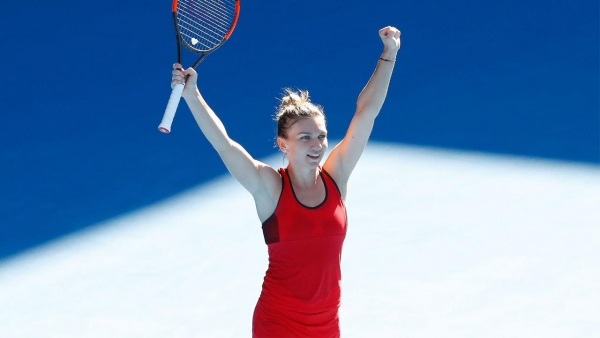Just because your game plan takes a while to kick in, don’t abandon ship.
Simona Halep moved through to the semifinals of Australian Open 2018 on Wednesday with a 6-3 6-2 victory over Karolina Pliskova on Rod Laver Arena. The score line indicates that it was a fairly straight-forward victory. It was anything but…
Match report: Halep sets up Kerber showdown
Halep got off to a horror start, losing her opening service game with loose play that included a double fault. Serving at 0-3, Halep led 30-15, but threw in another double fault and then couldn’t chase down a backhand winner from Pliskova.
At 0-3, 30-40, a double break was beckoning, and the match was already on the skids just 14 minutes in. Halep went after Pliskova’s forehand and forced an error in the net to stay alive at deuce. Halep forced another forehand error on the next point, this time running out wide near the edge of the court.
The game plan materialised just in the nick of time. Halep would ultimately serve three double faults serving down 0-3, but Pliskova would also commit six forehand errors in the game.
Attack the forehand, especially out wide. Rinse. Repeat.
Pliskova would only yield nine backhand unforced errors for the match. That side was not where Halep focused her attention. Halep went after Pliskova’s forehand, which coughed up 16 unforced errors and seven forced errors. Those 23 combined errors provided Halep with a repeatable winning strategy that completely flipped the momentum in the match.
Halep lost the first three games of the match, then miraculously won the next nine straight to lead 6-3 3-0. There was no conceivable way you could have predicted Halep would win nine straight after such a dire start.
Little by little, Halep was able to pressure Pliskova’s forehand with depth and direction, and little by little a seemingly hopeless situation evaporated, and baseline dominance replaced it.
Halep won an impressive 65 per cent (44/68) of her baseline points for the match, while Pliskova, who was unbeatable for the first 14 minutes, only managed to win 32 per cent (22/69).
It was a stunning turn of events.
Overall for the match, 67 per cent (92/138) of all points were played in the dominant 0-4 shot rally length. Pliskova’s powerful game is well suited to excel in short points, but Halep dominated it 43 to 29.
What’s so interesting is that the perception of Halep’s game is that she is much more dominant in the longer rallies. That’s simply not true at this year’s Open.
To the semifinals, Halep has won 91 more points than she has lost (273 won and 182 lost) in the 0-4 rally length. When a fifth shot has been hit in the court, you would expect Halep to be even more dominant. It’s simply not the case, as the Romanian had won 168 points - and also lost 168 points. Halep is employing a “first strike” strategy this year with great success. Long rallies have so far provide her no advantage whatsoever.
Halep now plays Angelique Kerber in the semifinals. Kerber will employ a completely different game style than Pliskova. Kerber has a +36 point advantage in rallies of five shots or longer (139 won / 103 lost).
Halep is going to have to concoct a completely different game plan against the patient lefty if she is to advance to her first Australian Open final.
